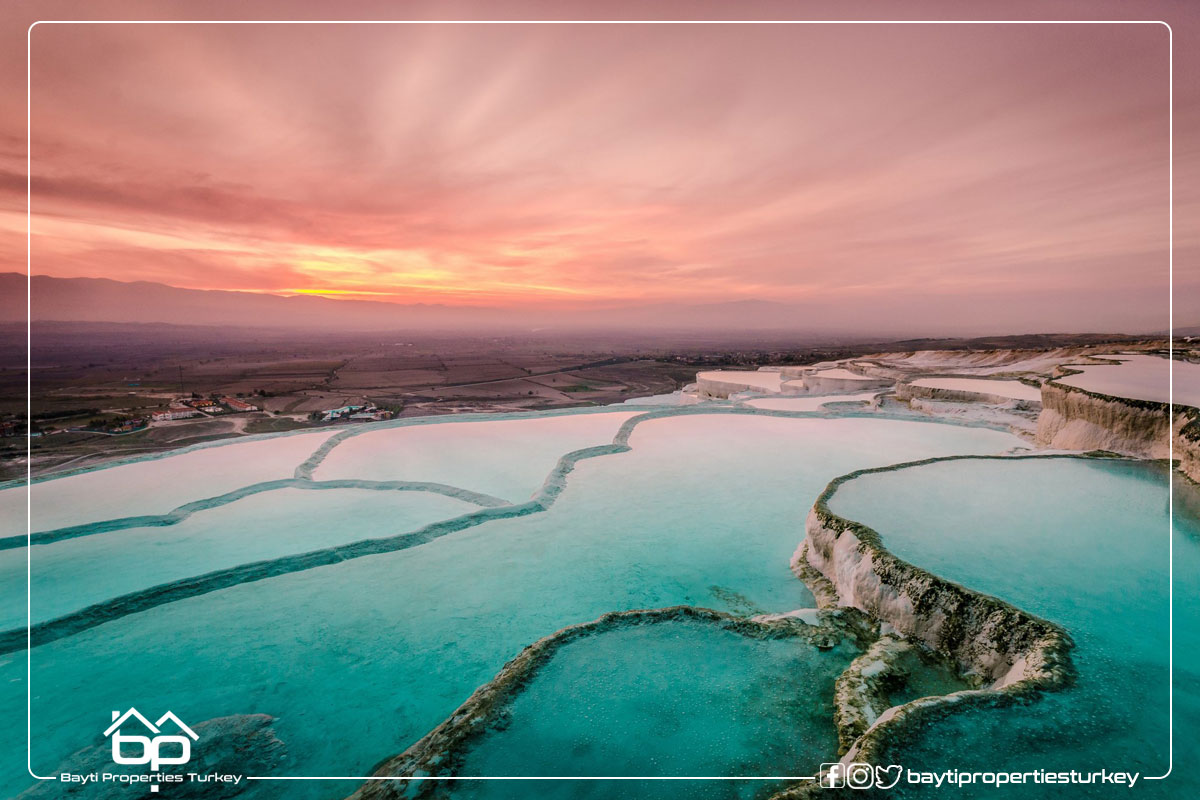Pamukkale in Turkey… the magic of nature and superstition
There are many different reasons why Pamukkale is worth a visit. It has in its distinctive terrain a lot of ancient history and the mystery surrounding it.
Pamukkale, which means “cotton castle” in Turkish, is a natural site in the hills of Denizli Province in southwestern Turkey. About 19 km from the city of Denizli, in the inland Aegean region of Turkey, in the valley of the Menderes River, the site enjoys a pleasant temperature most of the year.
The area is famous for the carbonate mineral left by flowing water. Over the thousands of years, this mineral has formed white water basins famous all over the world for its healing properties, making it one of the medical tourism destinations in Turkey.
Although it is one of the most important tourist areas in Turkey, most people who visit the country do not have access to the hot ponds in Pamukkale because it is located far from the country’s capital.
The legend of Pamukkale springs in Turkey:
Throughout the ages, Pamukkale hot water has always been said to have some healing properties, but how did it come to be?
There is a legend that tells the story of an ugly young girl who lived in a small village near Pamukkale. She was so ugly that no one wanted to be with her. She became so desperate and lonely that she wanted to kill herself.
So she jumped off the top of a waterfall ridge but instead of being crushed to death, she fell into one of the pools of water.
The magical powers of the water removed her sorrows and she became a very attractive girl.
And when she came out of the water, she met a nobleman of Denizli and he was so fascinated by her beauty that he fell in love with her and asked her to marry him. They lived happily ever after.
The Turks say that bathing in swimming pools will cure diseases such as nutritional and chronic disorders, digestive and circulatory problems, eye and skin diseases, etc. For this reason, Pamukkale has been a thriving health resort since ancient times. Even Cleopatra bathed in pools of healing
The healing properties of Pamukkale springs:
The most important thing to do when visiting Pamukkale is to take a bath in the dazzling white travertine pools. These natural rock pools were created from calcium deposits coming from hot springs in the area.
These deposits grew on the steep cliffs of Pamukkale in the same way that stalactites form inside caves. And gradually spread in pools over the years.
To get to these pools, you will have to walk (barefoot so as not to damage the limestone) all the way from the lower entrance to the site to the top where these small natural pools are.
The pools closest to the top are the hottest while those closest to the bottom of the site have lukewarm water.
Hierapolis
In addition to the healing properties of the water, the travertine pools in Pamukkale are surrounded by some impressive monuments and historical sites.
One such site is the ancient Greek city of Hierapolis, located above the swimming pools.
Hierapolis was turned into a health resort in the second century BC. It became a healing center where physicians used thermal springs as a treatment for their patients.
In AD 17, a major earthquake left the city completely in ruins. The Romans rebuilt it and added a large amphitheater.
Thousands have benefited from pools of healing water.
The city grew and became very rich, but over hundreds of years there were a lot of earthquakes and eventually the city did not fully recover and was completely abandoned in the 14th century, to become today an important archaeological site for tourism in Turkey


